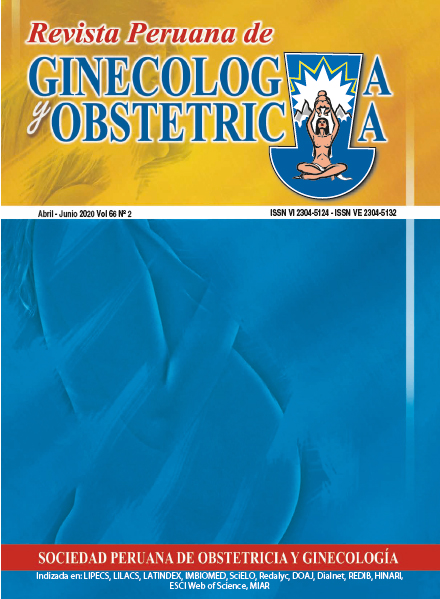Frequency and indications of cesarean delivery in a public teaching hospital in Lima, Peru
DOI:
https://doi.org/10.31403/rpgo.v66i2246Abstract
Introduction: Cesarean delivery was an option initially reserved for cases where vaginal delivery could compromise the life of the pregnant woman or the fetus. Due to diverse socioeconomic or cultural causes, cesarean delivery has become more accepted as an elective birth procedure. The WHO has established a marginal cesarean rate of 15% in primary cesarean deliveries, as higher rates do not decrease fetal morbidity and mortality. Worldwide, there have been rates as high as 21% (European countries), and 36% in Peru in 2015. Objectives: To determine the frequency of cesarean section and the most frequent indications in a public teaching hospital. Methods: Descriptive, retrospective series of case studies of patients who underwent elective or emergency cesarean section between January 2013 and December 2017 at a public teaching hospital in Lima, Peru. Results: The frequency of cesarean section was of 50.2%, and the most frequent indications were previous cesarean delivery and cephalopelvic disproportion. Conclusions: In the Peruvian public hospital studied, the rate of cesarean section exceeded that recommended by the WHO. The most frequent indication was repeat cesarean section.
















